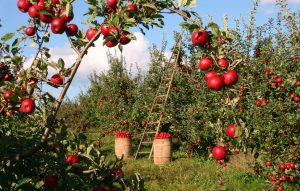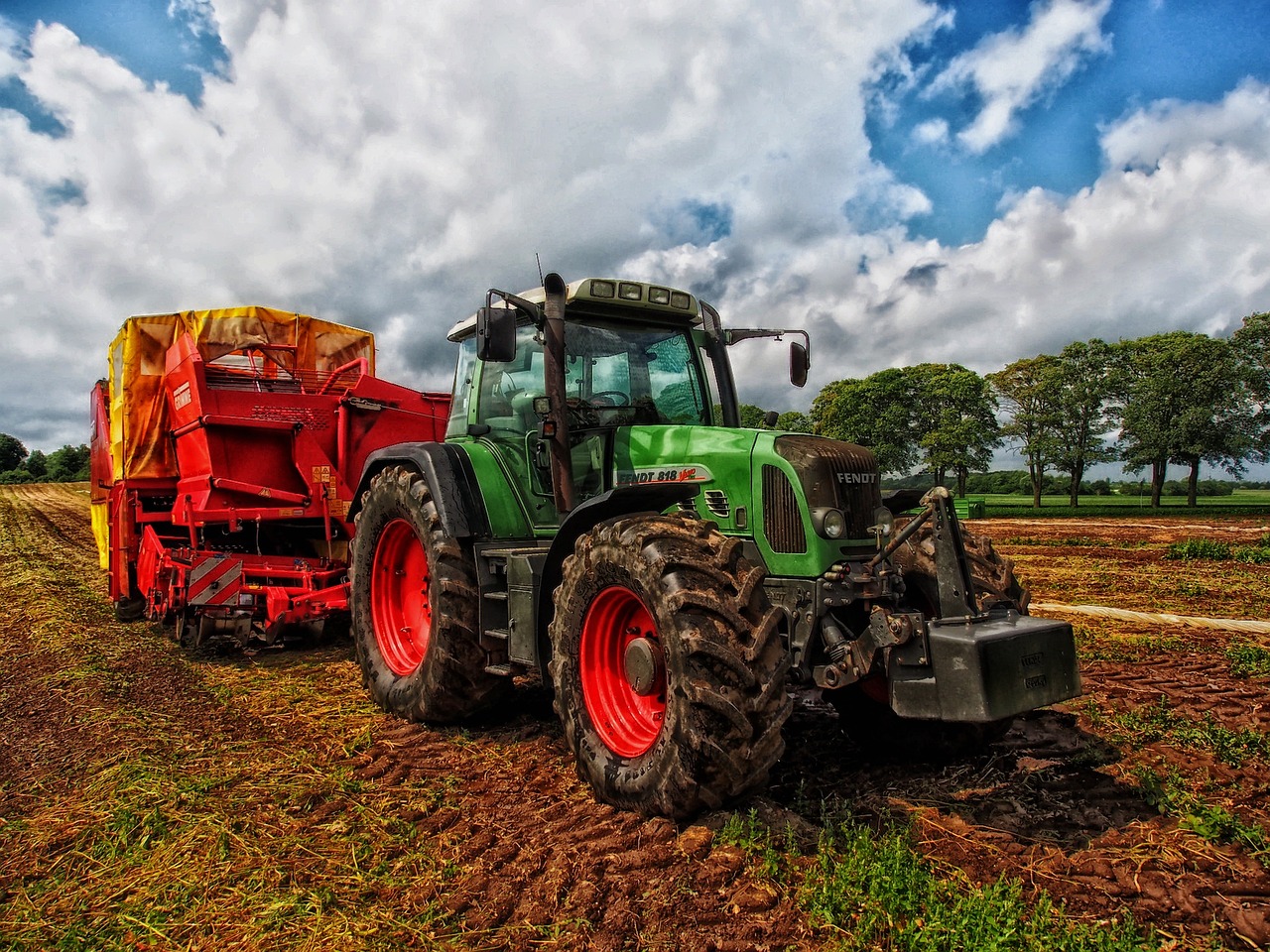Agricultural business growth: It highlights how important agriculture is to society’s fundamental structures. As we approach a new era in agriculture, we need to be prepared for it with creative farming methods, a keen understanding of market dynamics, and substantial financial support.
Agricultural business growth
“Agriculture is not crop production as popular belief holds – it’s the production of food and fiber from the world’s land and waters. Without agriculture, it is not possible to have a city, stock market, banks, university, church or army. Agriculture is the foundation of civilization and any stable economy.” This profound statement by Allan Savory, a Zimbabwean ecologist, sets the stage for our exploration into the thriving world of agricultural business growth. It emphasizes the pivotal role that agriculture plays in the core structure of society, We are on the brink of a new age in agriculture, one that demands innovative farming solutions, an astute comprehension of market dynamics, and robust financial aid for agriculture.
Key Takeaways
- Understanding the critical role innovative farming solutions play in the growth of an agricultural business.
- Strategies for leveraging market dynamics to ensure long-term success in agriculture.
- Exploring various avenues of financial aid for agriculture that promote scalability and sustainability.
- Real-world examples of effective approaches that lead to significant agricultural business growth.
- Insights into aligning farming practices with evolving consumer preferences and global economic patterns.
Understanding the Dynamics of Agricultural Markets
In an industry as pivotal and dynamic as agriculture, understanding market dynamics is key to forecasting and capitalizing on agriculture growth opportunities. As we delve into the global trends and consumer demands reshaping the agricultural landscape, farmers and agribusinesses must be prepared for the wave of changes steering market competitiveness and innovation.
Navigating Global Trends in Agriculture: Agricultural business growth
Recent years have seen significant shifts in the global trends in agriculture. Factors such as climate change, technology adoption, and international trade deals impact the way agricultural businesses operate. For instance, the rise of sustainable farming practices and the integration of digital agriculture are no longer just niche trends but requirements for staying relevant in a rapidly evolving market. Analyzing data from leading market analysts helps businesses anticipate these trends and adjust their strategies accordingly.
Adapting to the Shifts in Consumer Demand: Agricultural business growth
Moreover, consumer demand has transformed considerably, with an increasing number of consumers advocating for ethically sourced and environmentally friendly products. This change in consumer behavior drives agricultural companies to reevaluate their supply chain models and production methods. Embracing sustainability isn’t solely beneficial for the environment but has also become a deciding factor for the informed consumer, thereby influencing the market dynamics and contributing to the agriculture growth narrative.
As consumer preferences evolve, so must the agricultural sector. The implementation of these changes isn’t just a response to a trend but a profound adaptation to the new market realities. Case studies of successful market adaptation strategies reveal that transparency, innovation, and a keen understanding of the consumer are indispensable in achieving sustainable business growth.
Key Financial Supports for Agribusiness Expansion
As the agricultural sector seeks to expand and modernize, tapping into tailored financial supports is crucial. Agribusinesses can leverage various funding mechanisms designed to foster long-term investment in agriculture, facilitating a stronger and more resilient industry. Understanding how to navigate these financial streams and the institutions behind them, such as the Bank of Agriculture (BoA), is foundational for any farm or agribusiness aiming for growth.
Securing Business Loans for Long-term Investment
Securing business loans is a strategic step for agribusiness owners who are planning long-term investments in their operations. Loans can provide the necessary capital for equipment upgrades, expansion of land, and the implementation of advanced farming technologies. To ensure success, it is vital for farmers to present compelling business plans, demonstrating the potential for growth and profitability. Investing in agriculture takes foresight and patience, as returns on investment may take time to materialize, making the case for a loan that aligns with the business’ long-term objectives.
The Role of the Bank of Agriculture (BoA) in Facilitating Growth
The Bank of Agriculture serves as a cornerstone institution for those seeking financial supports for agribusiness. The BoA’s suite of financial products and services are uniquely tailored to meet the needs of the agricultural sector. With offerings such as low-interest loans, grant programs, and even insurance products, the BoA underpins sustainable agricultural productivity and expansion. Partnering with the BoA not only provides funding but also connects businesses with a network of experts who can offer guidance on making sound investments that ensure long-term sustainability and profitability in the competitive market of agriculture.
Advancing Agricultural Techniques for Enhanced Productivity
The continuous evolution of advancing agricultural techniques has become pivotal in achieving enhanced productivity in agriculture. Through farming innovations and adoption of efficient farming methods, the agricultural sector is witnessing a transformation that not only promises increased yield but also advocates for sustainability. In this exploration, we will delve into the realm of advanced technologies and methodologies that have been instrumental in reshaping modern farming landscapes.
Smart Farming Technologies: Agricultural business growth
Smart farming technologies are the linchpins of precision agriculture, harnessing the power of data analytics, and IoT devices to optimize field-level management. This approach tailors farming practices to the specific needs of crops, micro-locations, and timing, ensuring that resources are used most effectively. In the domain of enhanced productivity, precision agriculture has set a new standard, reducing waste and increasing crop yields significantly.
Further, the strategic use of high-efficiency fertilizers and advent of genetically modified crops have addressed the challenges posed by a growing global population and the restrictions of arable land. The significance of these agricultural techniques is heightened when considering the overarching goal of food security. To provide a deeper understanding of the impact of these advancements, a comparative analysis is presented below.

| Technique | Primary Benefits | Examples of Implementation |
|---|---|---|
| Precision Agriculture | Resource optimization, reduced waste, higher yields | GPS-guided tractors, drone-based monitoring systems |
| High-Efficiency Fertilizers | Improved nutrient uptake, reduction in leaching, enhanced crop quality | Controlled-release fertilizers, organic-mineral blends |
| Genetically Modified Crops | Resistance to pests/diseases, drought tolerance, increased productivity | BT cotton, herbicide-tolerant soybean, Golden Rice |
Farming Innovations: Agricultural business growth
It is imperative to underline the importance of research and development in crop science and soil health. As a cornerstone of farming innovations, R&D propels the advancement of new varieties and growth techniques that can thrive under changing environmental conditions and resource constraints. Integrating expert opinions and success stories, it becomes apparent that advancements in agricultural methods are not merely incremental but can lead to exponential improvements in the way we cultivate our lands.
Ultimately, with the right adoption and scaling of these advanced techniques, stakeholders in the agricultural domain can look toward a future marked by sustainability and abundance. The key to unlocking this potential lies in a collective commitment to innovation, knowledge sharing, and embracing the technological advancements that drive agricultural productivity forward.
Business Agricultural: Harnessing New Opportunities
The agricultural landscape is continually evolving as it embraces modernity and innovation. In this pursuit, alignment with emerging trends and technological advancements is pivotal. For business agricultural entities, the adaptation of Australian agric innovations is not just a modern luxury but a strategic imperative that ensures competitiveness and efficiency in a dynamic market.
Integrating Australian Agric Innovations: Agricultural business growth
In the Australian sphere, the spirit of innovation has led to numerous advancements that resonate well with global agricultural needs. By integrating high-tech farming equipment, data-driven crop management systems, and sustainable resource utilization methods, businesses can align with a greener and more productive future. Such integration drives the synergistic growth in agriculture, providing a beacon for others to follow.
Partnerships Between Farmers and Herders for Synergistic Growth
Moreover, the cultivation of robust partnerships between farmers and herders represents the embodiment of unity for mutual benefit. These relationships foster a shared vision, enabling stakeholders to tap into a wider array of resources, expertise, and markets. It is in these collaborative ventures that we witness real-time examples of business agricultural strength, deriving from collective effort and shared goals.
| Innovation | Impact on Farmers | Impact on Herders | Combined Benefits |
|---|---|---|---|
| Smart Feeding Systems | Increased crop yield efficiency | Optimized feeding patterns | Better land utilization and cost reduction |
| Precision Livestock Farming | Enhanced soil nutrient management | Improved animal health monitoring | Higher productivity and product quality |
| Renewable Energy Solutions | Reduced operation costs | Stable energy supply for remote herding operations | Environmental sustainability and energy independence |
As we explore these partnerships between farmers and herders, it becomes clear that the symbiosis between crop and livestock farming can be significantly enhanced. Through Australian agric innovations, what once were hurdles transform into stepping stones, ushering in a new age where the sum of business agricultural ventures is greater than its individual parts.
Conclusion
The culmination of our comprehensive exploration into the growth of agricultural business brings us to forge a clear path forward. Sustained success in agriculture is not serendipitous—it’s the result of meticulous planning and the consolidation of industry milestones. As we look ahead, it’s crucial to harness the collective wisdom garnered from our agricultural achievements to spur innovation and scalable solutions.
Consolidating Agricultural Business Accomplishments
Agricultural businesses stand today as a testament to resilience and advancement, having navigated a complex web of challenges to emerge stronger and more efficient. The key to ongoing success lies in taking stock of these accomplishments and consolidating agricultural business achievements into a strategic framework. This reflective analysis not only cements past successes but also ensures that the lessons learned become stepping stones for future endeavors.
Planning for Sustainable and Scalable Growth
As we chart the course for future growth, the emphasis lands squarely on sustainability and scalability. Sustainable growth in agriculture requires a deep commitment to environmental stewardship, community engagement, and fiscal responsibility. By integrating scalable agricultural strategies, businesses can address the looming global food demands with innovative, adaptable solutions. Strategic planning encompasses not only current technological and market trends but anticipates shifts that will define the agricultural landscape of tomorrow.
Leveraging Workforce Development and Management in Agriculture
The backbone of a robust agricultural business is not only found in the fields, but also in the hands of the people who cultivate them. In the realm of agricultural workforce development, the emphasis on nurturing a skilled and efficient team of farm workers cannot be overstated. It’s not just about managing farm workers; it’s about fostering an environment where continuous learning and improvement are the norm. Employment strategies in agriculture today revolve around equipping staff with the latest farming techniques and technology, ensuring they are agile in response to the evolving demands of the sector.
Management Strategies For Farm Workers
Effective management strategies for farm workers involve understanding their needs, providing clear communication, and recognizing their efforts. It is a multifaceted approach that includes fair compensation, health and safety assurances, and opportunities for career development. The unique challenges of labor in agriculture—from seasonality of work to the physical demands of the job—require managers to be adaptable and responsive. By prioritizing the well-being and professional growth of their workforce, agricultural businesses can yield greater productivity, enhanced employee retention, and ultimately, a more profitable operation.

To underscore the importance of these concepts, numerous case studies reveal that farms deploying strategic employment strategies in agriculture benefit from higher operational efficiency and workforce morale. For instance, agricultural enterprises that invest in regular training sessions for their workers often report significant improvements in yields and quality of produce. Furthermore, when management supports their labor force with advanced tools and collaborative work approaches, the ripple effect of increased performance and satisfaction is clearly observable across the entirety of the agricultural supply chain.
FAQ
What are some effective strategies for promoting agricultural business growth?
Effective strategies for agricultural business growth include leveraging innovative farming solutions, understanding market dynamics, securing financial aid, and applying smart farming technologies. Embracing precision agriculture, using high-efficiency fertilizers, and implementing advanced crop science techniques can also drive productivity.
How can agricultural businesses adapt to global trends and shifts in consumer demand?
Agricultural businesses can adapt to global trends by staying informed on international trade policies, sustainability requirements, and consumer preferences. Adapting business models to focus on environmentally friendly practices, investing in research and development, and aligning produce with consumer health trends are vital steps for adaptation.
What financial supports are available for agribusiness expansion?
Financial supports for agribusiness expansion include business loans, government subsidies, and support programs like those offered by the Bank of Agriculture (BoA). These financial instruments are designed to aid long-term investment in agriculture, helping businesses scale and grow sustainably.
What are the latest advancements in agricultural techniques that enhance productivity?
Advancements in agricultural techniques that enhance productivity encompass smart farming technologies, precision agriculture, and the use of genetically modified crops. Other developments include sophisticated irrigation systems, automation, and data-driven decision-making tools that improve farm management and crop yields.
How can Australian agricultural innovations be integrated into farming businesses?
Integrating Australian agricultural innovations into farming businesses can be done by adopting cutting-edge practices such as advanced livestock management, drought-resistant crops, and innovative land management strategies. Collaboration with Australian entities and adaptation of their technology to local conditions are also essential steps.
What are the benefits of partnerships between farmers and herders?
Partnerships between farmers and herders can result in synergistic growth, offering diverse income streams, better land use through mixed farming practices, and shared resources for improved efficiency. These partnerships can also lead to enhanced soil fertility and increased agricultural production.
How can workforce development and management improve agricultural business outcomes?
Workforce development and management can significantly improve agricultural outcomes by providing training and upskilling for farm workers, implementing effective labor management strategies, and ensuring a motivated and skilled workforce. This, in turn, increases efficiency, productivity, and profitability in agricultural operations.
